Fuel Delivery Apps: The Billion-Dollar Opportunity You’ve Been Waiting For
Look around. People get food, groceries, and even prescriptions delivered to their doorsteps. But when it comes to fuel? They’re still driving to stations and wasting time. That’s where you can make a difference.
Fuel delivery apps are the future. Whether it’s busy professionals or businesses with fleets, the demand for convenience is through the roof. And this is a billion-dollar industry waiting for you to step in.
So, how do fuel delivery apps make money? That’s the question. To succeed, you need the right monetization model. From subscription plans that keep customers coming back to surge pricing during peak times to fleet services for businesses—there are countless ways to profit.
In this blog, we’ll break down the best monetization strategies that’ll help you turn this opportunity into a cash cow. The time to capitalize on this is NOW. Let’s dive in.
Why You Should Develop a Fuel Delivery App in 2025?
Let’s explore why developing a fuel delivery app is a smart business move, focusing on the market potential, key benefits, and future growth opportunities.
A] A Rapidly Expanding Market
The global mobile fuel delivery market is experiencing explosive growth, driven by increasing consumer demand for convenience and the rise of on-demand services.
The market is projected to grow from $5.4 billion in 2024 to $8.9 billion by 2031, reflecting a compound annual growth rate (CAGR) of 7.3%. (OpenPR)
This presents a significant opportunity for businesses to enter a market with high growth potential.
North America currently leads the way, accounting for 35% of the global revenue, while Asia Pacific is expected to become the fastest-growing region due to urbanization and increased mobile penetration.
The sheer scale and untapped potential make fuel delivery apps a lucrative opportunity for businesses looking to capitalize on this trend.
B] Significant Benefits
Here are some of the key benefits of developing a fuel delivery app:
B.1.Capture Growing Consumer Demand
Fuel delivery is more than just a convenience; it’s a rapidly growing need in the market. By developing a fuel delivery app, your business can tap into a large customer base that prefers the ease and convenience of having fuel delivered directly to their vehicles.
The growing trend in fuel delivery apps and on-demand services means that customers are willing to pay for time-saving solutions, and your business can cater to this demand.
B.2. Streamline Operations and Increase Efficiency
Running a fleet and managing logistics can be a headache, but with the right fuel delivery app, you can streamline your operations.
With fleet management tools integrated into the app, you can optimize delivery routes, reduce fuel wastage, and ensure efficient service delivery.
This minimizes operational costs and maximizes profitability, making the business model more scalable and sustainable in the long term.
B.3. Enhance Customer Loyalty Through Subscription Models
Fuel delivery apps allow businesses to develop subscription models that encourage repeat customers. Offering memberships with benefits like discounted fuel prices, priority delivery, or exclusive deals can foster customer loyalty.
Regular customers who subscribe to your service provide steady, predictable revenue, giving your business a solid foundation to grow.
B.4. Increase Revenue Through Multiple Revenue Streams
Beyond charging delivery fees, fuel delivery apps can generate revenue through various channels.
You can introduce premium pricing for express deliveries, partnerships with fuel suppliers for a commission on each delivery, or integrate complementary services like car maintenance.
Additionally, in-app advertising or offering data analytics to related businesses can create new revenue opportunities.
B.5. Eco-Friendly Business Practices
Consumers today are more conscious of their environmental footprint, and businesses that integrate sustainability into their operations are more attractive.
Fuel delivery apps can reduce carbon emissions by optimizing delivery routes and minimizing idle time.
Offering eco-friendly delivery options or using electric vehicles for fuel delivery can enhance your brand’s image and align with growing eco-conscious trends.
C] Extreme Future Growth Potential
The fuel delivery app market is set to expand even further in the coming years.
By 2025, the on-demand fuel delivery sector in the U.S. alone is expected to be valued at around $533.5 billion, with millions of active users fueling demand.
This level of growth represents a significant opportunity for businesses to establish themselves in a market that’s still in its early stages. (Vinova)
Moreover, the rise of electric vehicles (EVs) is poised to add another layer of growth.
While fuel delivery remains the primary focus, incorporating EV charging solutions into the app could open up additional revenue streams, positioning your business at the forefront of both traditional fuel and alternative energy markets.
If you are thinking of entering this market, then collaborating with experienced mobile app development service providers who have extensive experience working in this industry will be very helpful.
Top Monetization Strategies for Fuel Delivery Apps
As a business owner or entrepreneur in the fuel delivery space, understanding how these apps generate revenue is crucial for success.
Whether you are just starting or looking to optimize your existing platform, there are various top monetization strategies for fuel delivery apps that can help your business thrive.
Below, we’ll dive into some of the most effective ways to earn revenue while meeting market demands.
1. Delivery Charges
One of the most straightforward and dependable ways to monetize your fuel delivery app is through delivery charges. This strategy ensures that you generate consistent revenue with each transaction. Delivery charges can vary based on factors like:
-
Distance: Longer delivery routes may incur higher charges.
-
Fuel quantity: Larger fuel deliveries might justify a higher fee.
-
Urgency: Offering fast, urgent deliveries can command premium rates.
These variable fees help businesses scale and provide customers with the flexibility they need. This model is one of the top monetization strategies for fuel delivery apps because it’s transparent, easy to understand, and generates predictable revenue.
2. Subscription Plans
For businesses looking for a more stable and recurring source of income, subscription plans are a fantastic option.
By offering customers a membership that guarantees regular fuel deliveries, you can foster loyalty and create predictable revenue streams. Common benefits of subscription models include:
-
Discounted prices on fuel.
-
Priority delivery for subscribers.
-
Exclusive offers for loyal customers.
These perks not only make customers feel valued but also help ensure that your business retains a steady flow of income.
Implementing subscription plans is considered one of the best monetization strategies for fuel delivery apps, as it builds a loyal customer base and smooths out revenue fluctuations.
3. Surge Pricing
Surge pricing is a strategy borrowed from ride-hailing apps that fuel delivery services can also take advantage of. During peak demand periods or unexpected events, such as severe weather, the need for fuel deliveries rises dramatically.
Implementing surge pricing can be an effective way to capitalize on these moments of high demand.
Here’s how surge pricing works:
-
Higher fees are applied during peak hours or emergencies.
-
Customers agree to pay more for immediate or emergency fuel deliveries.
By adjusting pricing dynamically based on demand, you ensure your business maximizes revenue during times when it’s most needed.
Surge pricing is considered one of the smart revenue models for fuel delivery apps, as it boosts profitability when demand surges.
4. Partnerships & Advertisements
Beyond direct payments from customers, fuel delivery apps can generate revenue through strategic partnerships and advertisements.
Forming partnerships with fuel suppliers, car maintenance businesses, or other service providers can create new revenue streams.
Here's how this works:
-
Fuel Supplier Partnerships: You can partner with suppliers to provide fuel at a discounted rate and take a commission for each transaction.
-
Advertising Space: Allow other businesses, such as car services or auto parts vendors, to advertise within the app and earn money through these promotions.
This model is particularly effective because it creates passive income opportunities.
By building strong relationships with third-party businesses and integrating advertisements into the app, you can continuously generate revenue with minimal ongoing effort. You can hire dedicated developers who can help you integrate these programs easily into your app.
5. Commission-Based Model
A popular and effective revenue model for fuel delivery apps is the commission-based model. In this setup, your app acts as an intermediary between the fuel supplier and the customer.
The app earns a commission from the fuel provider for each transaction that occurs through the platform. The benefits of a commission-based model include:
-
Scalability: You can scale rapidly without the burden of holding fuel inventory.
-
Low overhead: Since you don’t have to manage stock or delivery logistics directly, the operational costs are reduced.
By acting as a connector in the supply chain, this model allows businesses to generate consistent revenue while offering a service that’s valuable to both customers and fuel suppliers.
It’s one of the best revenue models for fuel delivery apps, as it minimizes operational risk while maintaining profitability.
6. Corporate & Fleet Services
Fuel delivery apps can leverage from the lucrative corporate and fleet services market. Companies that rely on a fleet of vehicles, such as delivery services or logistics companies, require regular fuel deliveries.
Offering specialized services for these types of businesses can help you secure long-term contracts and generate significant revenue. Here’s what this can look like:
-
Bulk fuel deliveries to businesses with large fleets.
-
Custom contracts for corporate clients with regular fuel needs.
-
Discounted rates for bulk purchases or frequent deliveries.
By offering tailored services to corporate clients, you position your fuel delivery app as a reliable partner, which can help you build a more profitable and sustainable business model.
7. White-Label Solutions
As the demand for fuel delivery services increases, white-label solutions are becoming an attractive way to scale your business.
A white-label solution allows other companies to license your technology and use your app under their own brand name. By offering your app as a white-label product, you can generate income through:
-
Licensing fees.
-
Ongoing maintenance and support contracts.
-
Updates and feature additions.
This model is a great way to expand your reach without investing heavily in marketing.
By offering a white-label solution, your fuel delivery app can quickly gain market presence in various regions or industries, all while generating passive income from licensing agreements.
From delivery charges to subscription plans, and from surge pricing to corporate services, there are plenty of ways to ensure consistent income while meeting customer needs.
By implementing these smart revenue models for fuel delivery apps, you set your business up for long-term success in an evolving market.
Case Study: Profitable Fuel Delivery Business Models
The fuel delivery industry is evolving rapidly, with various fuel delivery business models driving profitability. Below are seven successful examples showcasing different revenue strategies.
► Booster Fuels: On-Demand Corporate Fueling
Booster Fuels operates on a B2B fuel delivery model, partnering with corporate fleets and office parks. It eliminates the need for fuel stations by delivering directly to parked vehicles, generating revenue through subscription plans and per-gallon pricing.
► Filld: App-Based Consumer Fuel Delivery
Filld follows an on-demand fuel delivery app model, allowing customers to request refueling via an app. The company monetizes through delivery fees, fuel markups, and fleet contracts, making it a scalable fuel delivery revenue model.
► CAFU: Subscription-Based Fuel Delivery
Dubai-based CAFU uses a subscription fuel delivery model, offering unlimited refueling for a fixed monthly fee.
This approach ensures predictable revenue and high customer retention, making it one of the best monetization strategies for fuel delivery apps.
Businesses looking to develop an app like CAFU can leverage subscription-based pricing for a sustainable revenue stream.
► Gaston: Emergency Fuel Delivery Service
Gaston focuses on emergency fuel delivery, providing fuel when customers run out on the road. It profits from premium pricing, convenience charges, and roadside assistance partnerships, aligning with smart revenue models for fuel delivery apps.
► Yoshi: Fuel Delivery with Add-On Services
Yoshi extends beyond fuel delivery by offering car maintenance services like oil changes, tire checks, and car washes. This multi-service fuel delivery model enhances customer value and increases revenue through bundled service pricing.
► EzFill: White-Label Fuel Delivery for Businesses
EzFill leverages a white-label fuel delivery model, enabling businesses to offer fuel delivery under their own brand.
Revenue comes from licensing fees, fuel markups, and fleet partnerships, making it a leading B2B fuel delivery revenue model.
Entrepreneurs planning to develop an app like EzFill can adopt a white-label approach for rapid scalability and brand customization.
Each of these fuel delivery business models demonstrates how companies can maximize revenue and scalability in this fast-growing industry.
How JPLoft Can Help in Developing a Fuel Delivery App?
The fuel delivery industry is booming, and to stand out, you need an app that’s efficient, reliable, and user-friendly.
That’s where we come in! As a top fuel delivery app development company, JPLoft specialize in building innovative, scalable platforms that meet the unique needs of your business and customers.
What we offer:
-
Custom Design: A seamless, intuitive user experience.
-
Real-Time Tracking: Track deliveries from start to finish.
-
Secure Payment Gateway: Hassle-free, secure transactions.
-
Scalability: Our apps grow as your business does.
Our success with 2U Fuel, a fuel delivery app that’s made waves in the industry, showcases our expertise. Let’s work together and bring your fuel delivery app vision to life!
Wrapping Up
The fuel delivery app market is booming, offering tremendous opportunities for growth and profit. Whether you opt for delivery charges, subscription models, or corporate services, there are multiple revenue streams to explore.
The market is expanding rapidly, and with the right strategy, you can tap into this billion-dollar industry and offer a valuable service that customers will love.
By leveraging smart monetization models and incorporating innovative features, your fuel delivery app can thrive in this competitive space.
Now is the perfect time to build a business that meets consumer demand while driving profitability.
FAQs
Fuel delivery apps typically charge customers through delivery fees, which can vary based on factors like distance, fuel quantity, and urgency. Some apps also offer subscription models with discounted prices and exclusive perks.
Some of the most effective strategies include delivery charges, subscription plans, surge pricing, partnerships with fuel suppliers, in-app advertising, and offering fleet services to businesses.
Yes, fuel delivery apps can form partnerships with fuel suppliers, car maintenance services, or other related businesses. These partnerships can provide revenue through commissions, exclusive deals, and in-app advertising.
Surge pricing can be an effective way to increase revenue during high-demand periods, such as peak hours or emergencies, by charging higher fees for immediate deliveries.
Fuel delivery apps can offer specialized services to businesses with fleets, such as bulk fuel deliveries, custom contracts, and discounted rates for frequent deliveries, providing a steady source of revenue through long-term contracts.





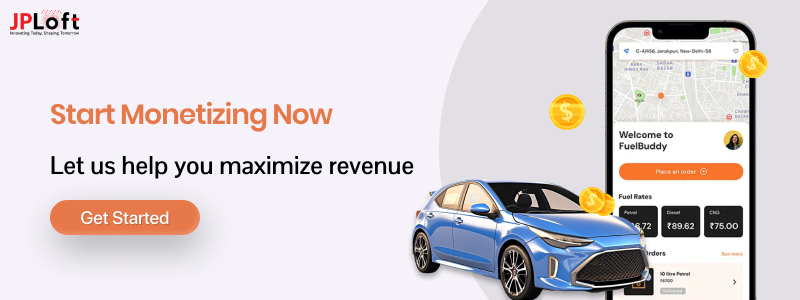
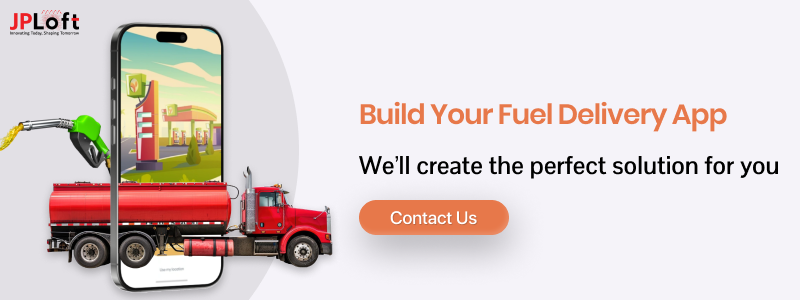
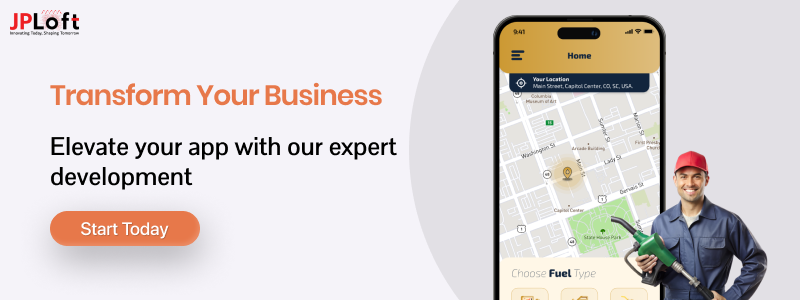

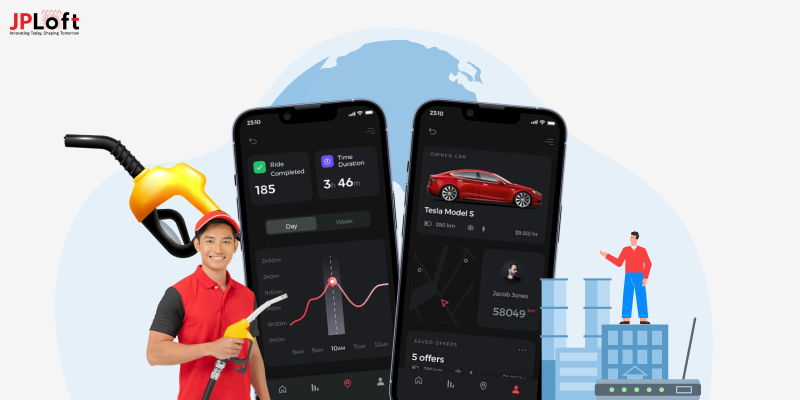
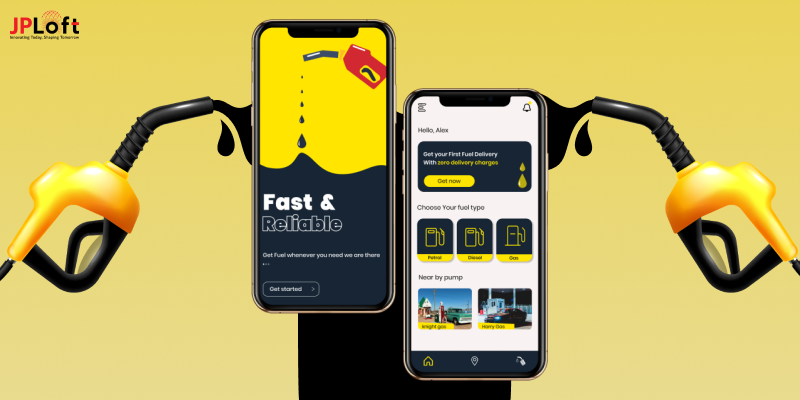
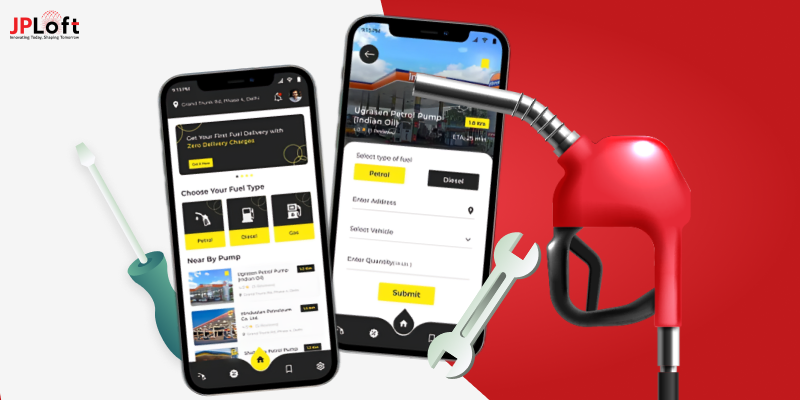



Share this blog